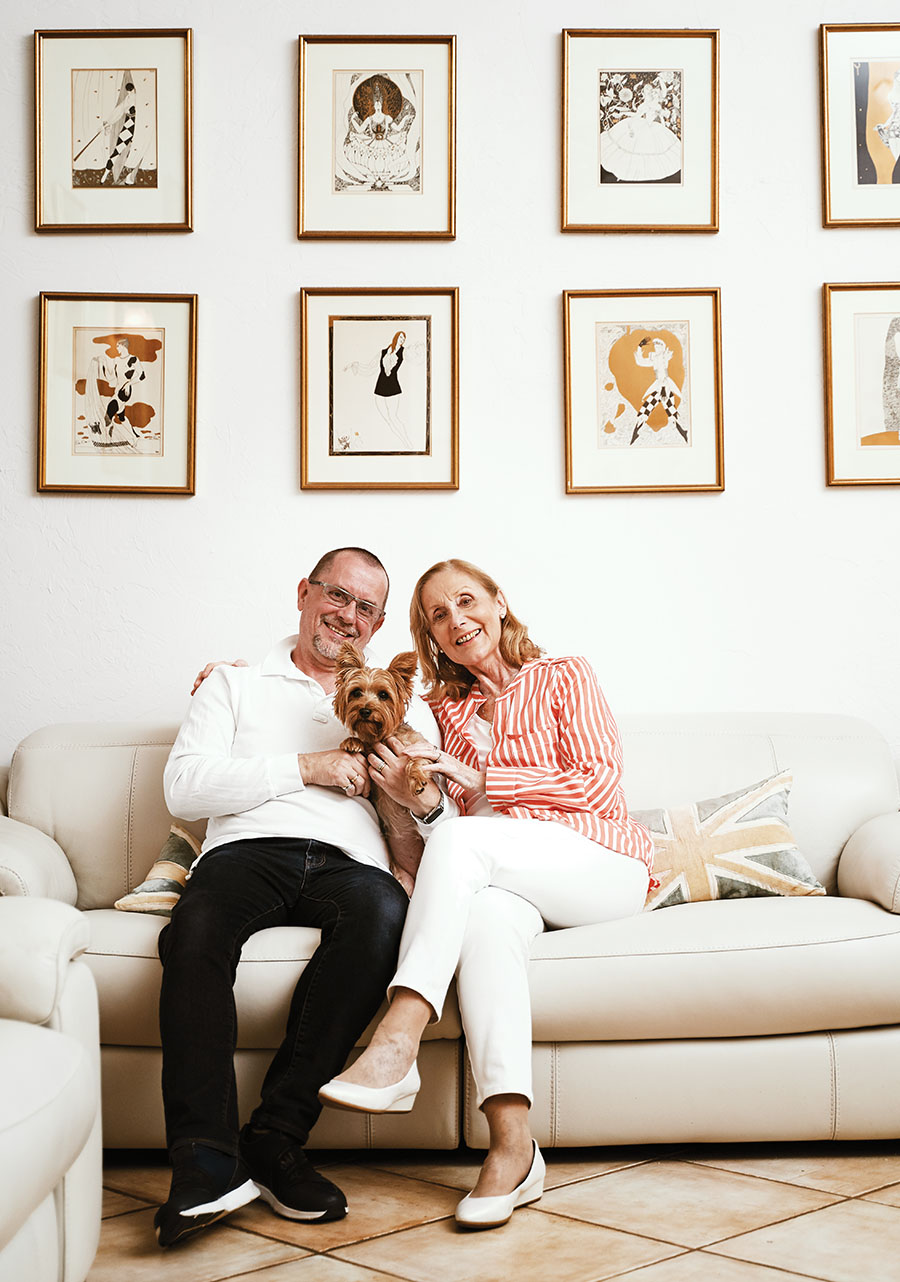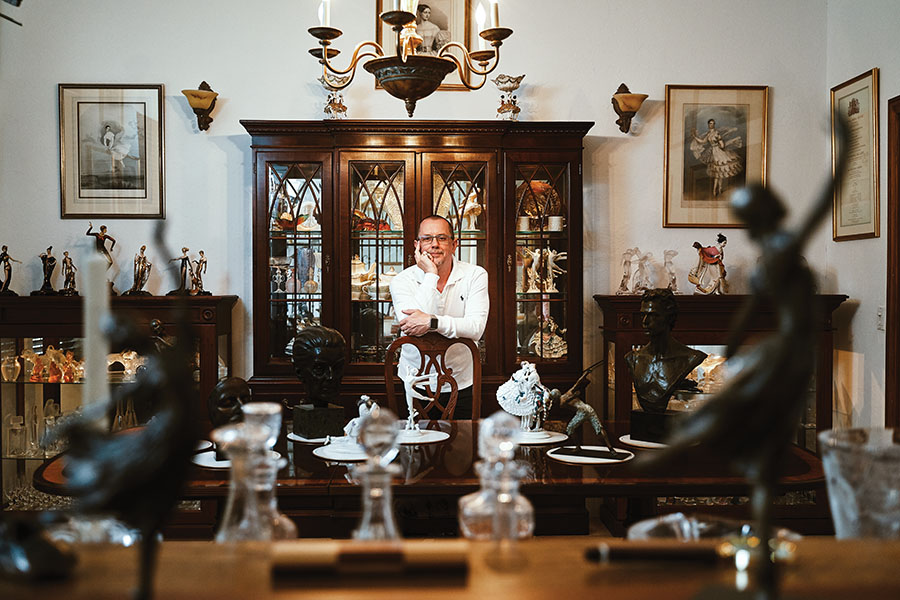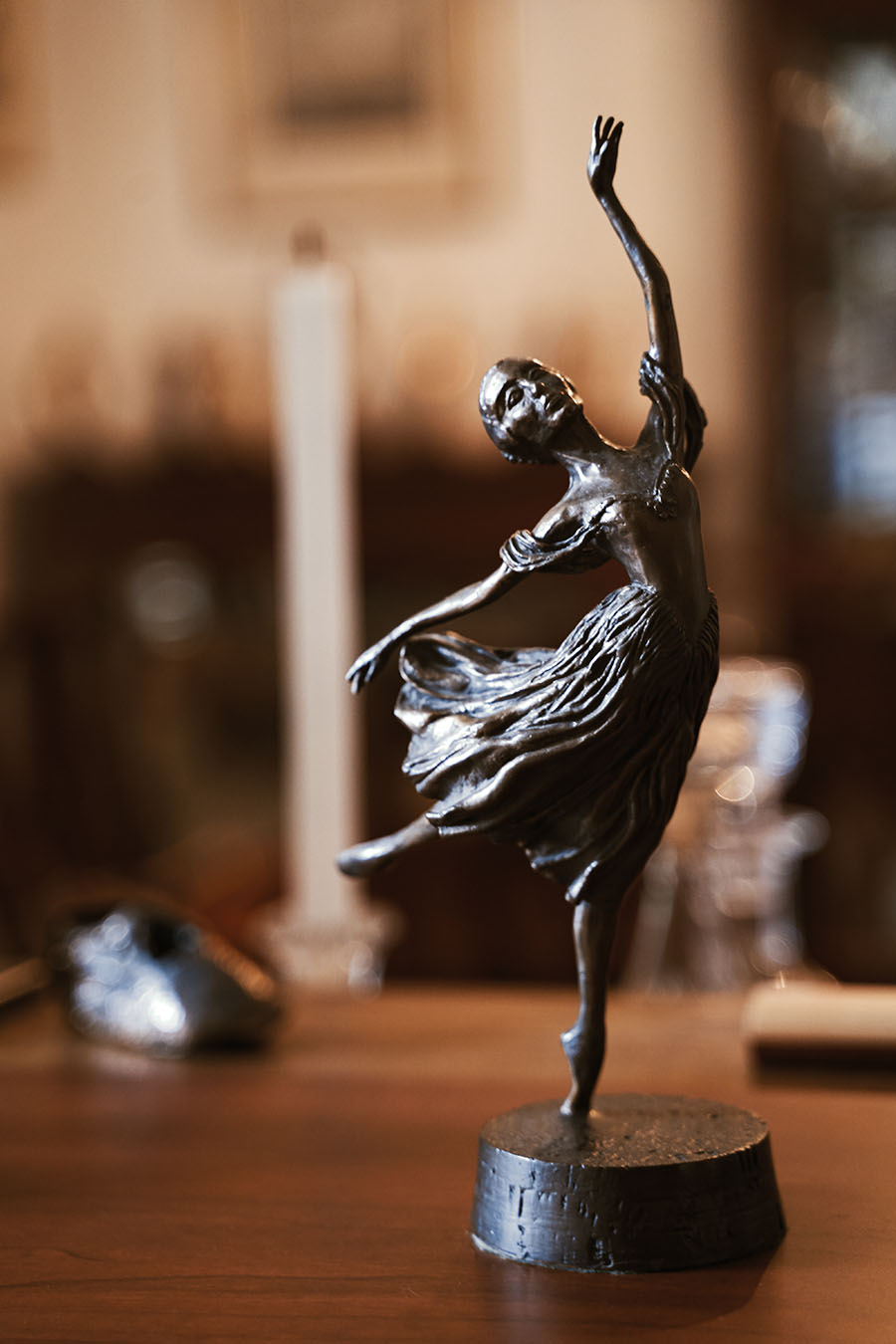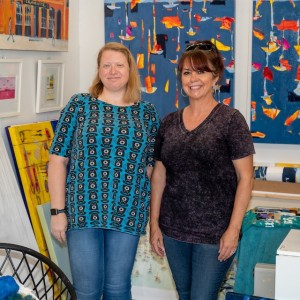After severely tearing leg muscles and tendons while attending The Rambert School of Ballet in London, a single lithograph uplifted a young man from a crippling depression. Unable to perform and too poor to attend performances, his friends invited him over for tea, wisely forging a blind date between an injured and lost 16-year-old and a print of four ballet dancers: the first ballerina to go on pointe, surrounded by her delicate entourage. “Suddenly, it was this beauty that I saw,” says Iain Webb, the Director of Sarasota Ballet, envisioning with nostalgic clarity the portrait which transformed his romance with dance. Time passed and legs healed, yet the yearning for that gripping beauty persisted as he recognized ballet’s profound past—a past to lean on in times of painful struggle. Webb soon filled his touring boxes with newly discovered ballet books rather than costumes or makeup, slowly building to what is now more than 2,480 books on dance, along with paintings, photographs, posters, lithographs, porcelain figurines, busts, bronzes and everything in between.

“It’s a salvation,” says Webb, displaying the halls, walls and shelves of his home with a raw pride that has intensified and magnified for 42 years. Limited to no single element of dance, the collection spans the complex history of ballet and is widely recognized as one of the largest private ballet collections in the world, due to its quality and rarity. And it all started with three books on the Mercury Theatre at The Rambert School, his first major stage. “That’s really where the bug started,” says Webb. With bookshelves of texts, cabinets of figurines and seemingly miles of wallspace dedicated to his collection, Webb’s Sarasota home now stands as an embodiment of his first love and passion.
Just a few blocks away from Sarasota Ballet’s FSU Center for Performing Arts at the Ringling Museum, Webb strolls his home’s hallways, pointing to his exhibits like a volunteer museum docent, having seen them a thousand times before, yet still in awe of the greatness surrounding him. He gestures to a poster autographed by George Balanchine, the choreographer, father of American ballet and co-founder of the New York City Ballet, then a signed original photograph of Anna Pavlova, the Russian prima ballerina and principal artist of the Imperial Russian Ballet from the early 20th century. Porcelain figurines depicting the fragile lace skirts of ballerinas sit on bookshelves, prints of costume designs by Picasso hang humbly on white walls, busts of Sir Frederick Ashton and Sir Anthony Dowell pose illuminated on the living room mantle, and photographs, figurines and busts of Margaret Barbieri lay sprinkled throughout the house, a former Principal Dancer in the Royal Ballet Touring Company who performed alongside many of the great ballet masters of the 20th century. Now Assistant Director of Sarasota Ballet, Margaret and Iain celebrated their 37th wedding anniversary this past July.
And the pride of it all? Webb doesn’t hesitate. Despite the incalculable number of paintings in the house, one of which is a pastel painting by Oleg Prokofiev, the son of Russian-Soviet composer Sergei Prokofiev, created and given to Iain and Margaret as a wedding gift, the pride of the collection hangs next to Webb’s bed.
Vaslav Nijinsky, the greatest dancer there ever was, according to Webb, performed with a depth of emotion and passion that animated and exalted his characters and performances. “I could get lost in those roles,” says Webb. But after his extensive career, Nijinsky was diagnosed with schizophrenia, living in and out of psychiatric hospitals and mental asylums. Yet artistic souls never cease, and Nijinsky produced paintings that characterized his mental battles and suffering, including the deceivingly simple red and black piece that hangs humbly above Webb’s bedside table, a dreamcatcher and daily devotional. Bending over so the framed painting reaches eye-level, circular strokes entrance Webb, silently bridging him with his ballet ancestry, the minds and bodies that have never failed to inspire.

The collection continues to grow—a hefty bronze bust of Rudolf Nureyev, one of the greatest male ballet dancers of all time, sits patiently in Webb’s office, awaiting its proper place in the house. This continues to spark debate and negotiation between Iain and Margaret. “There’s no room,” she shouts lovingly as he exits her office. With pieces in cupboards and under couches, Webb appears to have no desire to desist, hoping that his home might one day be transformed into a museum for dancers, students and enthusiasts alike. “It’s the only thing where I can just go away and hide and relook and re-realize why I’m here, what I’m doing and what I’m trying to do,” he says.











